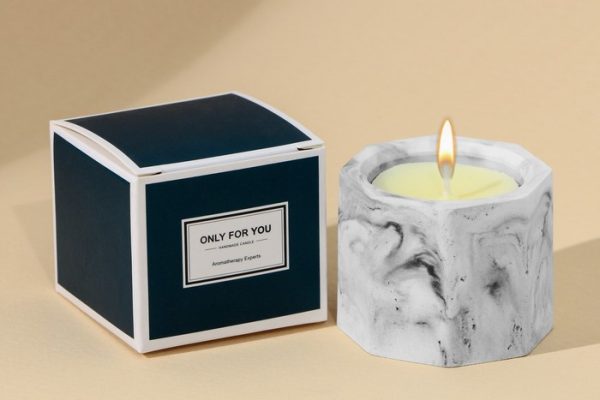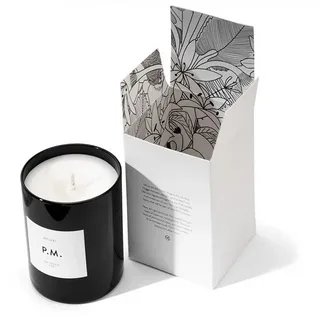Cigarette box packaging plays a big role in shaping brand image, consumer trust, and product safety. Designing the right packaging is not just about looks. It is also about function, compliance, and long-lasting impact. Many businesses overlook key elements, which leads to serious design errors. Let’s explore how to avoid the most common mistakes in cigarette box packaging design.
Ignoring Legal and Regulatory Guidelines
One of the biggest mistakes in packaging design is failing to follow laws. Tobacco products are heavily regulated in most countries. These rules often cover label warnings, color schemes, font sizes, and overall design features. Not following these rules can lead to fines or product bans.
Many designers focus on creativity. However, it’s important to understand that laws limit what can and cannot be shown on the box. For instance, many countries demand graphic warning labels on both the front and back. These warnings must not be hidden by branding elements or decorative layers.
Using attractive visuals or false claims is also forbidden in many regions. Claims like “light” or “mild” are banned in some markets. Instead of trying to hide warnings, brands should find creative ways to blend design and compliance. They can use colors, layout, and material textures that align with rules but still reflect the brand.
Designers and brands should work closely with legal teams or industry experts before finalizing custom cigarette box. This helps avoid redesign costs or regulatory blocks after mass production. It is also smart to stay updated, as packaging laws may change.
Choosing the Wrong Material
Another common mistake is picking the wrong material for the packaging. The material used in cigarette boxes must protect the product inside. It should also reflect quality and match the brand’s identity.
Using low-quality or thin materials can lead to damage. Cigarettes are fragile and can break or go stale if not packed well. A flimsy box will not provide proper protection during storage or shipping. Moisture, light, and air can affect the product’s freshness and taste. Poor material can make your product look cheap and untrustworthy.
High-quality cardboard or paperboard with a strong finish is usually a good choice. These materials can resist pressure and environmental factors. Some brands even use eco-friendly options. These materials not only protect the product but also appeal to consumers who care about the environment.
Material choice also affects how well the design looks. Glossy finishes may highlight colors, while matte surfaces give a subtle and elegant feel. Texture can add depth and make the box feel more premium. But if the material is not compatible with your printing method, the final result may not match the design idea.
Overlooking Brand Identity in Design
Packaging is a silent brand ambassador. If your design does not reflect your brand identity, your product may get lost in the market. This is a common error, especially among new brands.
Many companies copy other popular brands or follow trends blindly. This approach often fails. Your cigarette packaging must tell your story. It must show who you are and why your product is different. Without this connection, consumers may not remember or trust your brand.
Think about your target audience. Do they prefer bold designs or subtle ones? Are they drawn to modern looks or classic styles? Your box should align with your brand tone, values, and customer taste. Every element, from color to typography, should match your identity.
For instance, if your brand promotes tradition, a vintage theme with rich colors and serif fonts may work best. If your brand speaks to a younger audience, modern design with clean lines and bold graphics could be better.
Also, consistency across all packaging and branding materials matters. Your logo, colors, and taglines should remain the same across every platform. This helps build recognition and trust over time.
Poor Typography Choices
Typography may seem like a small detail, but it can affect how people see your product. Poor font choices or hard-to-read text can ruin even the best designs. Many designers use fancy fonts that may look cool but are hard to read. Others use text sizes that are too small, especially when adding legal warnings or instructions.
Readable text is key in cigarette packaging. It must work well from a distance and up close. Important details like brand name, product type, and health warnings should be clear and visible. Choosing simple, clean fonts helps make your design more user-friendly.
Mixing too many font styles is also a mistake. A busy design confuses the eye and makes the package look unprofessional. Stick to two or three fonts that work well together. Use font weight and size to create hierarchy and guide the reader’s focus.
Also, consider how typography pairs with your background color. Light fonts on light backgrounds or dark fonts on dark ones reduce contrast. This makes text hard to read. Proper spacing between lines and letters is another key factor. Tight or crowded text gives a messy look.
Typography can help create emotion too. A strong, bold font can show power. A smooth, elegant typeface might show luxury. Use typography not just for words, but as part of the brand voice.
Neglecting Packaging Functionality
Designers often focus only on appearance and ignore the packaging’s function. A great-looking box is useless if it is hard to open, doesn’t close well, or damages easily.
Consumers value ease of use. If your packaging is difficult to open or close, people will get frustrated. A cigarette box should open smoothly and securely hold the product. It must keep the cigarettes fresh and protect them from being crushed. Poor functionality can lead to a bad customer experience and affect repeat sales.
Some boxes may look nice but do not seal well. This lets in air and moisture, which can ruin the product. Others may break easily in pockets or bags, causing damage. Function must always be tested before finalizing the design.
Innovative features like magnetic closures or slide-out trays can improve the user experience. But these features must be durable and practical, not just stylish. A well-thought-out design also helps during packing, shipping, and storage.
Think about the full journey of your product. From factory to store shelf to the hands of the user. Each step needs strong and functional packaging. Your design should balance looks with performance. That’s the key to success in cigarette box packaging.
Ignoring Consumer Preferences
Design without knowing your audience is like shooting in the dark. Consumer preference plays a vital role in packaging success. Yet many brands ignore this and base their choices only on trends or internal opinions.
What appeals to one group may turn off another. Young adults might prefer bold and colorful designs, while older smokers may lean toward simple, classy looks. Some may prefer traditional flip-top boxes, while others may like newer sliding designs.
Consumer preference also includes values. Many buyers today care about sustainability. They may choose a product packed in recyclable or eco-friendly material, even if it costs a bit more. Ignoring this can hurt your brand image in the long term.
Before starting your packaging design, conduct research. Surveys, focus groups, or customer feedback can guide your choices. Learn what colors, designs, and formats your buyers like. What are their buying habits? What other brands do they admire?
Once you understand your audience, build your design around them. Include features that meet their needs and match their tastes. Packaging is more than wrapping. It is a silent conversation between brand and buyer. Speak their language, and they’ll respond with loyalty.
Using Low-Quality Printing Techniques
The print finish of a cigarette box often decides the first impression. A common error is cutting costs by using poor printing methods. This can lead to dull colors, blurry images, or faded text.
If your design looks great on screen but prints poorly, the final product suffers. Consumers notice print quality. It tells them about your product’s quality. A blurry or uneven print may lead buyers to think your product is low-grade.
Use printing techniques that match your material and design type. Offset printing is known for its sharp quality and is widely used for cigarette packaging. Digital printing may suit small batches or test designs. You can also try UV coating, embossing, or foil stamping to enhance certain areas of the box.
Test your print samples before full production. Check for color accuracy, alignment, and finish. Make sure the printed version matches the design vision. Investing in good printing shows your care for quality, which consumers appreciate.
Conclusion
Avoiding common packaging errors is key to successful product presentation. From materials to design choices, every detail matters. A smart, clear, and user-friendly design can set your brand apart. Remember, the goal is not just to pack cigarettes but to express your brand’s story and connect with your audience. Whether you are developing a new product or refreshing an old one, even one custom cigarette box designed the right way can make a lasting mark in the competitive market.








